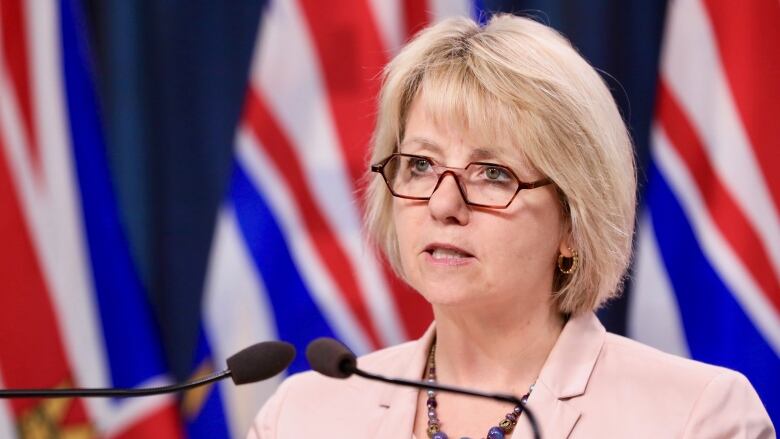B.C. runs risk of rapid rebound in COVID-19 cases if contacts exceed 65% of normal, health officials say
Modelling shows strong contact tracing has been buffer against surge in new cases

The latest epidemiological modelling by B.C. health officials shows recent contact rates in the province are at 65 per cent of normalhovering near the threshold for a potential rebound of new cases of COVID-19.
The province had previously said B.C. could go up to 60 per cent of normal contact rates, while keeping a lid on the number of new cases. By way of comparison, at the point in the pandemic where restrictions were highest, contact rates dropped to 30 per cent of normal.
Provincial Health Officer Dr. Bonnie Henry said Tuesday B.C. is currently maintaining a fine balance, increasing the number of connections, without yet seeing a dramatic increase in the numberof people whoare becoming infected. But Henry warned that if contacts increase too quickly, the province could see a "rapid rebound" in the number of cases a scenario she hopes to avoid entirely.
The modelling shows that so far, strong contact tracing has provided a buffer against a surge in new cases.Henry said97 to 99 per cent of contacts have been located within 48 hours in B.C.
The ability to conduct effective contact tracing is also dependent on physicaldistancing. With moderate physical distancing, tracers must locate at least 75 per cent of contacts within two to three days to maintain pandemic control.
With weak physical distancing, tracers would need to locate more than 75 per cent of contacts within the same time period to avoid a resurgence in cases.
Henry said the modelling shows that while B.C. has had success, first in dramatically flattening its curve, and then in maintaining a relatively stable new case count, continued success is dependent on maintaining physical distancing and other precautions.
"If we dramatically increase to 80 per cent, or go back to what was considered normal, we can expect to see a dramatic increase in cases, and that is what we want to avoid," Henry said.
"We have to be committed to staying together and doing the same things we have been doing, and that will allow us to do more we also have to philosophically accept that absolutely we are going to have more cases."
New modelling also shows that B.C.'s reproductive number representing the number of people one case will transmit to has dropped fromjust under threein March, to one.
WATCH | Dr. Bonnie Henry saysreopening B.C. could result in more cases, but if everyone is careful, the risk should bemanageable:
Henry said that for B.C. to continue reopening the economy, social bubbles must remain small.
"As we move into the next phase where we have more activity,we need to be able to continue to find people [for contact tracing]," she said.
Henry emphasized that the modelling is not a predictor of new cases, nor does it take into account measures that make certain kinds of contact safe, for example, physical barriers between people in grocery stores.
The low number of cases in the province also make predictive models inherently unstable, she said.
"Right now, we're in a strange place. Because until we have an ability to protect the population from thisvirus, we have to find the balance that will keep people from getting sick in large numbers," she said.
"Even when we think it's gone from our communities, it will come back because we need to travel, we need to have connections."
Mobility patterns gathered from smartphone users show that B.C. residents are gradually spending less time athome, and more time at work, and in retail andrecreational spaces, though those numbers still remain lower than seasonal norms based on previous years.
The B.C. Centre for Disease Control is working to develop a method to test wastewater for COVID-19, which Henry says could become an early detection tool.
Henry said that some testing has already been done in Vancouver facilities, with no positive results, indicating a low level of transmission.
Thirteen new cases of COVID-19 were announced in the province on Tuesday, bringing the total number of cases to 2,835. There has been one additional death.
There are currently 16 people in hospital, and seven in intensive care. There are no new health care or community outbreaks.













_(720p).jpg)


 OFFICIAL HD MUSIC VIDEO.jpg)
.jpg)



























































































